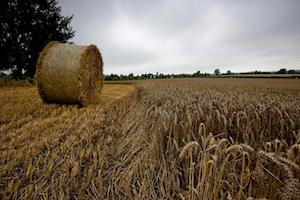As Nebraska livestock producers face low forage supplies and look for alternative feed sources, experts from the University of Nebraska-Lincoln are sharing their tips for moving forward this spring. Slow pasture growth, delayed planting, and limited cover crop production are all expected to impact producers this season.
Options for producers include haying or wheatlage. With haying, experts note that it is best to harvest in the late boot stage before heading, especially if the wheat is not an awnless variety. Keeping air out of the pile during wheatlage and covering the bunker of forage silage is essential to preventing oxidation; unlike corn silage, if wheatlage is not covered quickly after packing, the forage can turn an oxidized black hue.
Moisture content is expected to be a factor in harvest timing this spring, as well, and can quickly drop as plants develop from the milk to the late dough stage. According to experts, it is best to monitor plant moisture to help plan for harvest. When the soil is drier than usual, it can become too dry to make good silage.
Experts note that 2018 forage production will likely be much lower compared to the previous two years. However, there may still be a significant increase in wheat forage production by delaying forage harvest into mid-June.
More information and tips can be found by contacting the Nebraska Extension offices or by visiting the CropWatch.unl.edu and Beef.unl.edu websites.
